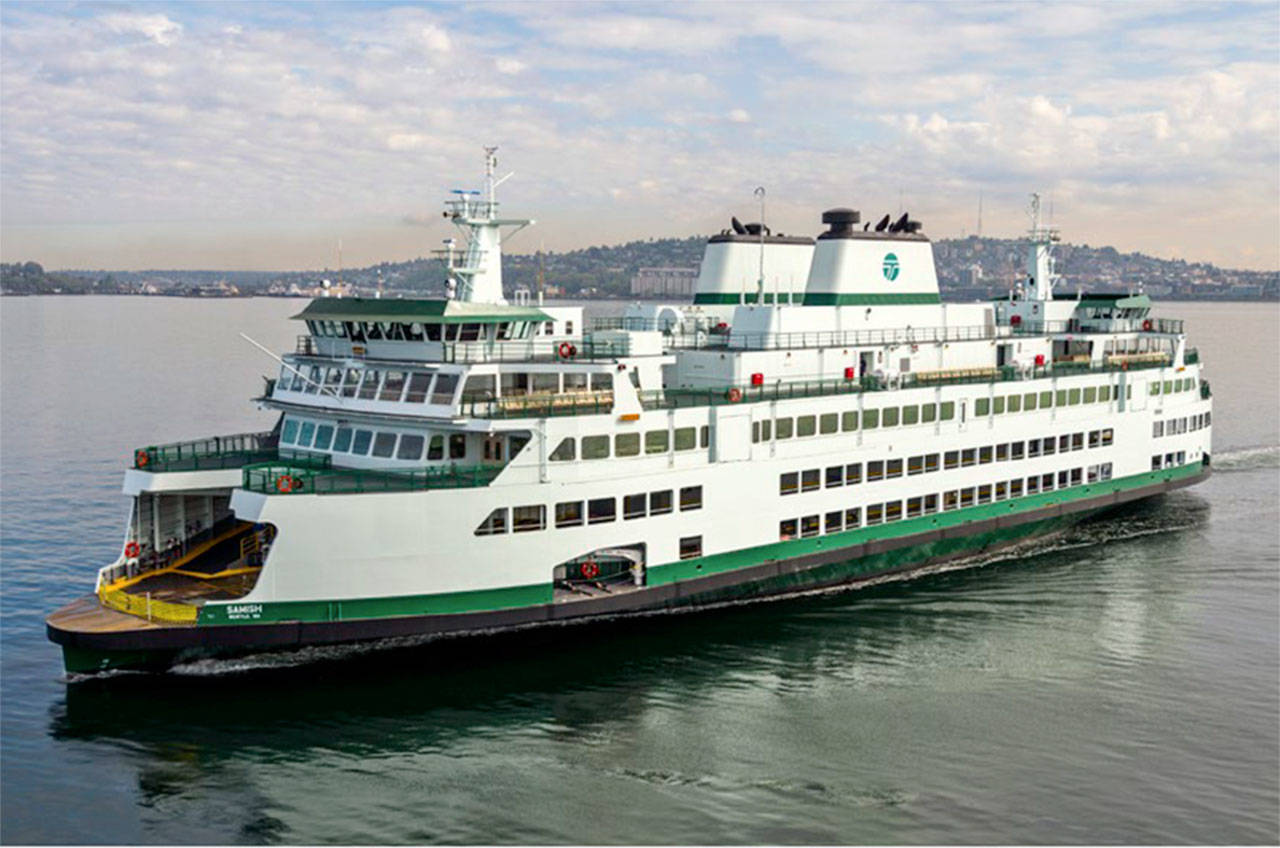For residents of the San Juan Islands, the state-run ferry system is the highway on which they travel to and from the closest towns.
Over the last two summers, islanders and visitors have been subjected to hours-late boats, breakdowns and cancellations from the Washington State Ferries. So far, this year has been no different.
The Journal reached out to WSF to ask why the spring and summer season is beginning so far behind schedule, what’s to be expected and what the department intends to do about the disruptions.
“Our staff has been receiving comments about delays for multiple years and has been monitoring the issue,” said WSF Strategic Communications Manager Hadley Rodero, who listed the following factors as contributing to recent delays.
Haro Strait slowdown
The current slowdown through Haro Strait (to reduce underwater noise for orca whales) is 11.5 knots (0.5 knots faster than last year’s slowdown advisory), and only covers the actual shipping lane. This results in a six to 6 to 8-minute addition to the transit. In addition, the 2019 slowdown began on June 1, as opposed to the June 19 start date in 2018. Because of this, WSF could be feeling the effects of the extra six to eight minutes on the schedule earlier in the season.
Later summer schedule start
Since 2017, WSF has started the summer schedule two weeks later than usual. In 2019, the summer schedule will begin on June 24. This late start provides less capacity to the route, which generally begins seeing summer traffic increases in early- or mid-June.
Elwha vs. Chelan
In 2018, Chelan served on the route due to extensive steel work being done on the Elwha. The Chelan is a faster boat, which could account for some of the delays that have been observed this spring. Different boat classes have different abilities to maintain schedules.
Changing reservation demands and travel patterns
The current schedule for the San Juan Islands has not been significantly revised since before reservations were implemented and is therefore built for less ridership outside of peak travel times. Since the rollout of reservations, however, demand has spread across the day, thus rendering the existing morning and evening dwell times unrealistically short. Ferry staff has noticed changing travel patterns among the San Juan Islands ridership. One notable example is an increase in the number of riders traveling between Sidney and Friday Harbor, which has created extended dwell time on return trips from Sidney.
Vessel backups at terminals
Vessels will often travel at reduced speed (10–13 knots) when another vessel is already at a single-slip terminal to moderate the dangers associated with vessels stacking up. Coupled with the 0.5 nautical mile safety approach zone, WSF often has vessels running at reduced speed in the San Juan Islands so as to not stack up.
Fleet Advisory on optimal speed
The fleet advisory advises captains to sail at optimal speeds for fuel efficiency, noise emission and public safety. Because of this, there may be some differences of interpretation between captains across routes throughout the fleet. Ultimately, it is the captain’s job to implement the advisory according to their best judgment. WSF’s captains are responsible for determining safe travel speeds and must consider many factors, including weather, traffic density and visibility, and other factors.
“Moving forward, we will continue to monitor the delays and look for near-term operational adjustments to alleviate the issue,” Rodero told the Sounder. “One short-term action we are looking into pertains to the Haro Strait slowdown. Staff is actively working with stakeholders across the Puget Sound to expand the Orca Network and deploy an ‘active management’ strategy to isolate the slowdown through Haro Strait to apply only when whale sightings occur. Looking toward the future, however, we understand the need to design a schedule that will accommodate the needs of the ridership in the San Juan Islands.”



